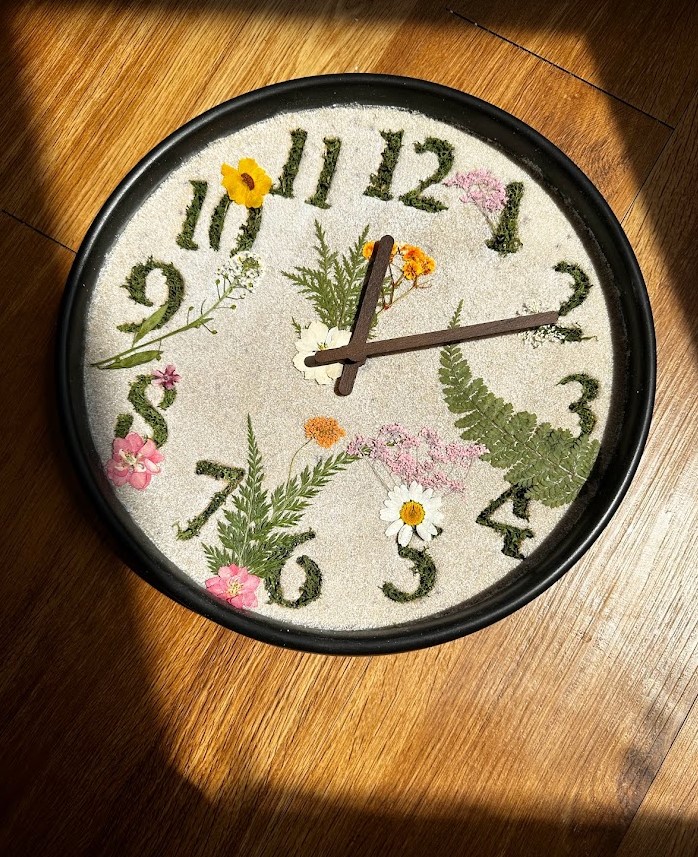As a nature lover, I was always fascinated by the beauty of the natural world. So when I decided to create a piece of art for my final project, I knew I had to incorporate nature in some way. After brainstorming several ideas, I settled on a clock piece that would showcase the beauty of pressed flowers and leaves and the passage of time.


To create the piece, I first sourced all the necessary materials, which can be seen in the images above. I purchased pressed flowers and leaves online, along with a clock. I also visited a local shop to buy some moss. I used preserved reindeer moss for the numbers since this seemed like the best choice out of what was available to me. The moss was easy to separate into smaller parts which made filling the numerical cut-outs a lot easier. The base of the piece was created using white sand, which would give it a neutral background to allow the flowers and leaves to stand out. Another reason for using white sand was that the hands were made out of dark wood. Making the background light would help the hands to stand out, which would also preserve me keep the wood finish of the hands. (Would have had to paint the hands if the background was dark hence losing the natural wood finish)
Before starting the design process, I had to consider the specifications and constraints of the project. I wanted the piece to be visually appealing and durable, so I had to ensure the flowers and leaves would not deteriorate over time. I decided against using resin to give the piece a protective covering as I wanted to maintain the natural look of the flowers and leaves.
With the materials and specifications in place, I began the process of designing the piece. I opted for a circular clock so that it would symbolize the cyclical nature of life. I wanted to keep the overall budget between $50 and $100 and I was successful in doing so. The total cost of materials came to just $33.
My initial plan was to use regular soil for the base instead of white sand, but I decided to go with the latter since I felt that this would give highlight the smaller elements in the artifact. The sand was purchased locally and layered four times to completely cover up the wood. More details regarding how the product was will be included in the next part of this report.

